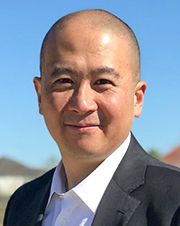Potential & challenges of applying artificial intelligence & machine-learning methods for geoscience
OR
SEG members, view the course for free!
Format: Virtual Webinar. 45 min. presentation followed by 15 min. Q&A
Please note that two sessions will be given at different dates listed below.
Session 1, Tuesday, September 22, 2020, 10 am to 11 am US Central Daylight Time
Session 2, Wednesday, October 28, 2020, 9 am to 10 am Beijing Time
Abstract
In recent years we have witnessed great achievements accomplished by artificial intelligence (AI), machine learning (ML), and/or data analytics in various areas such as e-commerce, computer vision, social media, self-driving cars, natural language processing, and healthcare. Driven by the advances in the GPU technology, cloud computing, and the rapidly increasing data volumes within the geoscience applications, the energy industry has recognized and embraced the tremendous potential of AI/ML and data analytics. Early research and development utilizing these algorithms for geoscience applications have shown encouraging and promising results. This lecture will present the potential and challenges of AI/ML and data analytics practice in geoscience, as well as the successes and failures to date.
We will discuss a variety of highly successful geoscience applications that leverage AI/ML and data-analytics algorithms to improve efficiency, accuracy, and to automate geoscience workflows, and to explore a new way of extracting values from geoscience data. In addition, we also will touch upon a variety of general questions which naturally arise due to the emergence of these technologies in geosciences. Some of these questions are: What other challenging problems can be formulated and solved effectively by AI/ML? How do we tailor the AI/ML and data analytics algorithms and paradigms to meet the specific properties of geoscience data? How do we fully exploit the power of AI/ML and data analytics while combining them with physical constraints? When should we and should we not apply AI/ML and data analytics approaches? Lastly but more importantly, how can we translate AI/ML and data analytics-based workflows from proof-of-concept works to scalable commercial products.

Your Instructor

Aria Abubakar was born in Bandung, Indonesia. He received an M.Sc. degree in electrical engineering in 1997 and as well as a Ph.D. in technical sciences in 2000, both from the Delft University of Technology, The Netherlands. He joined Schlumberger-Doll Research in Ridgefield, CT, USA in 2003, where he remained for 10 years, ending his tenure as a scientific advisor and the manager of the Multi-Physics Modeling and Inversion Program. From 2013 until mid-2017, he was the Interpretation Engineering manager at Schlumberger Houston Formation Evaluation in Sugar Land, TX. From mid-2017 until mid 2020, he was Data Analytics program manager for Software Technology and then Head of Data Science for the Schlumberger Exploration and Field Development Platform based in Houston, TX.
Aria is currently the head of Data Science for the Digital Subsurface Solutions. His main responsibility is to oversee and coordinate the utilization of artificial intelligence, machine-learning and data-analytics technology for subsurface applications throughout Schlumberger. Aria is quite active in SEG and currently serve as: Associate Editor of Geophysics, Member of Research Committee, Director of SEAM, and 2021 SEG Annual Meeting Technical program Co-Chair.
Aria was the 2014 SEG North America Honorary Lecturer, holds 40 U.S. patents/patent applications and has published five book/book chapters, written more than 90 scientific articles in journals, 200 conference proceedings papers, and 60 conference abstracts. He also has presented more than 300 invited and contributed talks in international conferences, institutes, and universities.
